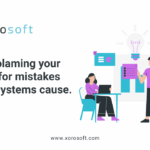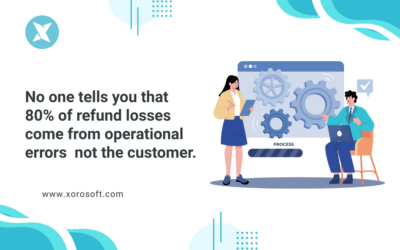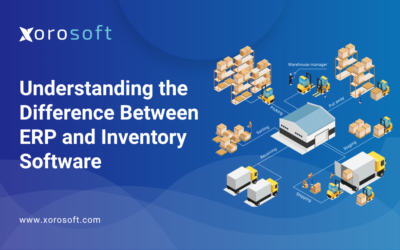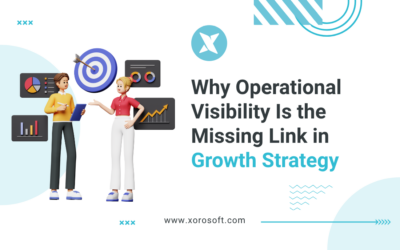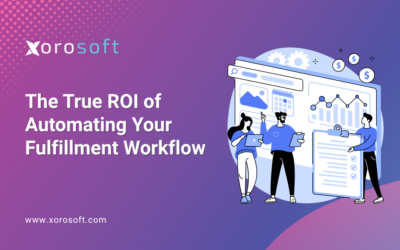
Introduction to ERP Systems
As a small business owner, I understand the importance of having the right tools and systems in place to streamline operations, improve efficiency, and drive growth. One such essential tool is an Enterprise Resource Planning (ERP) system. ERP systems are comprehensive software solutions that integrate various business functions, such as accounting, inventory management, sales, and human resources, into a single, centralized platform.
In today’s fast-paced business environment, implementing an ERP system can be a game-changer for small businesses. It allows you to automate time-consuming tasks, improve data accuracy, and gain valuable insights that can inform strategic decision-making. However, the process of implementing an ERP system can be daunting, especially for small businesses with limited resources. That’s why I’ve created this essential ERP implementation checklist to guide you through the process and ensure a successful implementation.
Benefits of Implementing an ERP System
Before we dive into the checklist, let’s briefly explore the key benefits of implementing an ERP system for your small business:
- Improved Efficiency: ERP systems streamline and automate various business processes, reducing manual tasks and errors, and increasing overall productivity.
- Enhanced Data Management: ERP systems provide a centralized database that consolidates all your business data, making it easily accessible and providing real-time insights.
- Better Decision-Making: With the wealth of data and analytics provided by an ERP system, you can make more informed and data-driven decisions to drive your business forward.
- Increased Collaboration: ERP systems facilitate cross-departmental collaboration by providing a shared platform for communication and information sharing.
- Scalability: As your business grows, an ERP system can easily scale to accommodate your evolving needs, ensuring that your systems and processes can keep up with your expansion.
Understanding Xorosoft ERP and Its Features
One ERP solution that I’ve found to be particularly well-suited for small businesses is Xorosoft ERP. Xorosoft is a comprehensive, cloud-based ERP system that offers a wide range of features and functionalities to streamline your business operations.
Some of the key features of Xorosoft ERP include:
- Integrated Accounting: Xorosoft ERP seamlessly integrates your accounting processes, including invoicing, payroll, and financial reporting, into a single, centralized system.
- Inventory Management: The inventory management module in Xorosoft ERP allows you to track stock levels, manage purchase orders, and optimize your supply chain.
- Sales and CRM: Xorosoft ERP’s sales and customer relationship management (CRM) features help you manage your sales pipeline, track customer interactions, and generate detailed sales reports.
- Human Resources: The HR module in Xorosoft ERP simplifies employee management tasks, such as time tracking, leave management, and performance reviews.
- Reporting and Analytics: Xorosoft ERP provides a powerful reporting and analytics engine, enabling you to generate customized reports and gain valuable insights into your business operations.
Preparing your small business for ERP implementation
Transitioning to a new ERP system can be a significant undertaking, but with the right preparation, you can ensure a smooth and successful implementation. The first step is to assess your current business processes and identify areas that could benefit from automation and integration. This includes evaluating your inventory management, accounting, and customer relationship management (CRM) systems.
Next, it’s crucial to secure buy-in from your team. ERP implementation affects everyone in the organization, so it’s important to communicate the benefits of the new system and address any concerns or resistance. Gather feedback from your employees and involve them in the decision-making process to foster a sense of ownership and commitment.
Finally, designate a project manager or implementation team to oversee the entire process. This team should have a clear understanding of the project’s goals, timeline, and resource requirements. They will be responsible for coordinating the various stakeholders, managing the implementation, and ensuring the successful integration of the new ERP system.
Setting up the Xorosoft ERP system for your small business
Xorosoft is a leading provider of ERP solutions for small and medium-sized businesses. Their comprehensive platform offers a range of modules, including inventory management, accounting, and CRM, all seamlessly integrated to streamline your operations.
The first step in setting up the Xorosoft ERP system is to work closely with their implementation team to configure the platform to fit your specific business needs. This includes customizing the user interface, defining your data structures, and integrating with any existing systems you may have.
Next, you’ll need to migrate your data from your current systems into the Xorosoft ERP. This process can be complex, so it’s important to work closely with the Xorosoft team to ensure a seamless transition and the integrity of your data.
Once the system is set up, you’ll need to establish the necessary security protocols and user access levels to ensure the confidentiality and integrity of your data.
Integrating the inventory management system into your ERP
One of the key benefits of implementing an ERP system like Xorosoft is the ability to seamlessly integrate your inventory management system. This allows you to have a real-time view of your stock levels, track incoming and outgoing shipments, and optimize your supply chain.
To integrate your inventory management system, you’ll need to work with the Xorosoft team to map your existing inventory data into the ERP platform. This includes defining product categories, tracking units of measure, and setting up automated replenishment triggers.
Once the integration is complete, you’ll be able to generate detailed reports on your inventory levels, track stock movements, and even set up automated purchasing and fulfillment workflows.
Streamlining accounting processes with Xorosoft ERP
Another crucial aspect of an ERP system is the integration of your accounting processes. Xorosoft’s robust financial management module allows you to automate tasks such as invoicing, accounts receivable, and accounts payable, saving you time and reducing the risk of errors.
To streamline your accounting processes, you’ll need to work with the Xorosoft team to set up your chart of accounts, define your billing and payment terms, and configure any necessary integrations with your banking or payment processing systems.
Once the accounting module is set up, you’ll be able to generate real-time financial reports, track your cash flow, and even set up automated payment reminders for your customers.
Training your employees on using the new ERP system
Successful ERP implementation is not just about the technology – it’s also about ensuring your employees are comfortable and proficient in using the new system. To achieve this, you’ll need to invest in comprehensive training for your team.
Start by identifying the key users of the ERP system and their specific training needs. This may include your accounting staff, inventory managers, and customer service representatives. Xorosoft offers a range of training resources, including user manuals, online tutorials, and hands-on workshops, to ensure your team is fully prepared to use the new system.
It’s also important to designate internal champions or super-users who can provide ongoing support and guidance to your team. These individuals should be well-versed in the system and able to troubleshoot any issues that arise.
Testing and troubleshooting during the ERP implementation process
As with any major technology implementation, you can expect to encounter some challenges and hiccups during the ERP rollout. It’s crucial to have a well-defined testing and troubleshooting plan in place to address these issues quickly and effectively.
Begin by conducting thorough testing of the ERP system in a controlled, non-production environment. This will allow you to identify and resolve any bugs or integration issues before going live. Work closely with the Xorosoft team to develop a comprehensive test plan that covers all aspects of the system, from data migration to user workflows.
Once the system is live, be prepared to address any user concerns or technical problems that arise. Establish clear communication channels and escalation procedures to ensure that issues are resolved in a timely manner. Xorosoft’s support team is available to assist you with any troubleshooting or maintenance needs.
Monitoring and evaluating the success of your ERP implementation
Implementing an ERP system is not a one-time event – it’s an ongoing process of continuous improvement. To ensure the long-term success of your Xorosoft ERP implementation, it’s crucial to regularly monitor and evaluate the system’s performance.
Start by defining key performance indicators (KPIs) that align with your business objectives. This may include metrics such as inventory turnover, accounts receivable aging, and customer satisfaction. Regularly review these KPIs and identify areas for improvement.
Additionally, gather feedback from your employees and customers to understand their experience with the new system. Use this feedback to identify pain points and make necessary adjustments to your ERP configuration or training programs.
The importance of ongoing support and maintenance for your ERP system
Implementing an ERP system is not a one-time event – it’s an ongoing process of continuous improvement. To ensure the long-term success of your Xorosoft ERP implementation, it’s crucial to have a robust support and maintenance plan in place.
Xorosoft offers a range of support services, including technical assistance, software updates, and regular system health checks. By partnering with their team, you can ensure that your ERP system is always up-to-date, secure, and optimized for your business needs.
Regular maintenance and system updates are also essential to keep your ERP running smoothly. This may include tasks such as database optimization, backup and recovery, and security patch management. Xorosoft’s team of experts can work with you to develop a comprehensive maintenance plan that fits your specific requirements.
Conclusion
Implementing an ERP system can be a transformative experience for small businesses, but it requires careful planning and execution. By following the steps outlined in this checklist, you can ensure a successful Xorosoft ERP implementation that streamlines your operations, improves your financial management, and enhances your overall business performance.
If you’re ready to take the next step in your ERP journey, I encourage you to book a demo with Xorosoft. Their team of experts will work with you to assess your needs, customize the platform, and ensure a seamless implementation process. Get in touch with them today to learn more.




